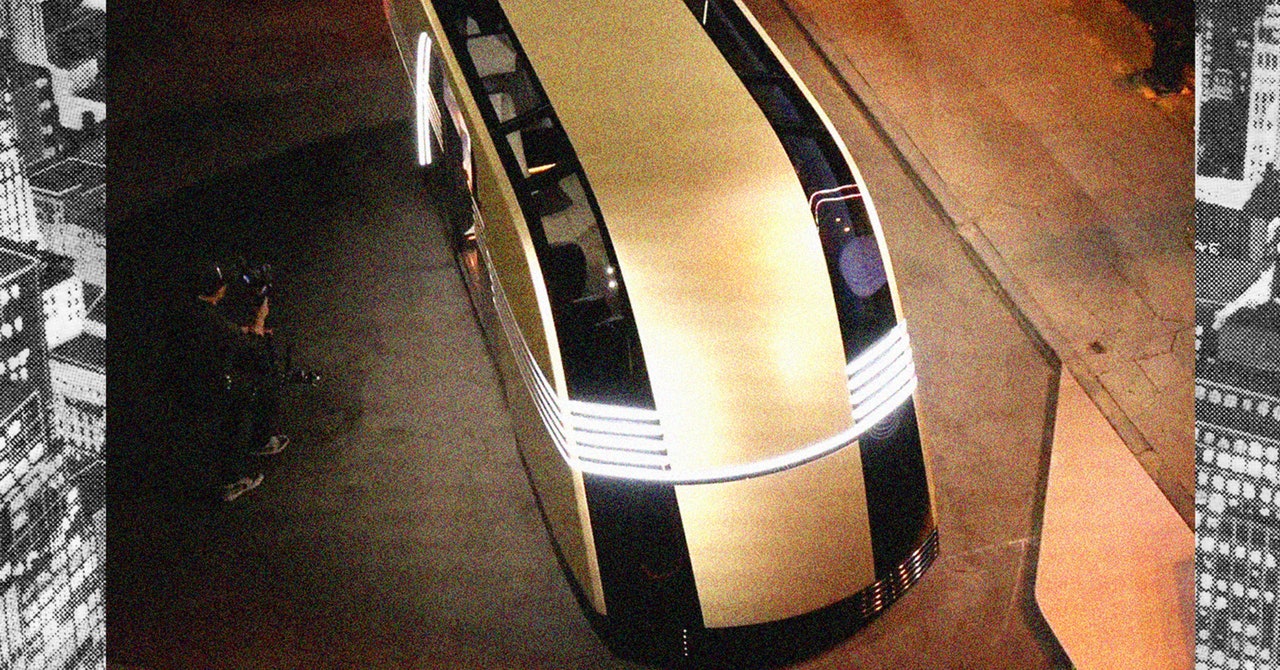A sleek, gold car pulls up to a bustling corner market, and a middle-aged couple alights. A woman eases a suitcase into the same vehicleâs spacious trunk. Later, a doodle and its master watch rocket videos in the front seat as the car eases around the neighborhood. No driver, no steering wheel, no pedals, no waiting, no traffic, no worries: This Tesla Cybercab drives itself.
Thatâs the vision shown off by Tesla CEO Elon Musk last week during a presentation broadcast from a set at Warner Bros. Studio, outside of Los Angeles. Some 20 prototypes cruised the movie lot as a series of mocked-up images showed scenes of the idyllic tomorrow these sleek people-movers could usher us into. But experts say Teslaâs brave, new city of the future will need more than a few robotaxis to transform this hi-def rendering into reality.
While mostly sidestepping the technical challenges of building self-driving technology, Musk chiefly focused on what an autonomous taxi service might mean. Starting next year, he said, Tesla owners should be able to share their personal cars by putting them into self-driving mode while theyâre not using them. It would be a sort of Uber-cum-Airbnb, the car off hustling for a paycheck while its owner hustles for their own. A vehicle constantly on the move could obviate the need for parking: âYouâre taking the â-ing lotsâ out of parking lots,â Musk quipped, as a presentation showed the asphalt expanses around LAâs notoriously trafficky Dodger and SoFi Stadiums transformed into green spaces.
In short, Musk and Tesla argued that autonomy means more pleasant lives for all. âA car in an autonomous world is like a little lounge,â Musk said, noting a ride in a self-driving taxi would cost less than even a bus trip. âYou can do whatever you want ⦠and when you get out, you’ll be at your destination. So yeah, itâs going to be awesome.â
But make personal self-driving cars too inexpensive, and too pleasant, and youâve got a city-sized problem on your hands. Cheaper, comfortable rides could lead to even more traffic and even more driving, says Adam Millard-Ball, a professor of urban planning and the director of the UCLA Institute of Transportation Studies. For proof, check out the studies of Uberâs and Lyftâs effects on US cities; research suggests that, despite marketing promises about the death of private car ownership, their introduction brought more urban traffic, not less.
In this way, cheap robot taxis are a sort of double-edged sword, ending in more urban sprawl. âThatâs going backward for the environment and for other urban goalsâwhether itâs being physically active or socially inclusive,â Millard-Ball says.
Taking the â-Ing Lotâ Out of Parking Lot?
Parks instead of parking lots could be a nice upside to self-driving. (Apartments instead of parking lots could also be really cool.) But itâll take more than just the switch to self-driving to get there. Anyone running a self-driving car service hoping to use as little parking space as possible will have to make a super efficient network. Thatâs going to require people to share vehicles. And people donât love to share.
âPeople love to move in a safe and comfortable way,â says Andreas Nienhaus, who heads up the consultancy Oliver Wymanâs Mobility Forum. âWhenever people have the choice and they donât have the guidance, they will opt into a personal car.â

